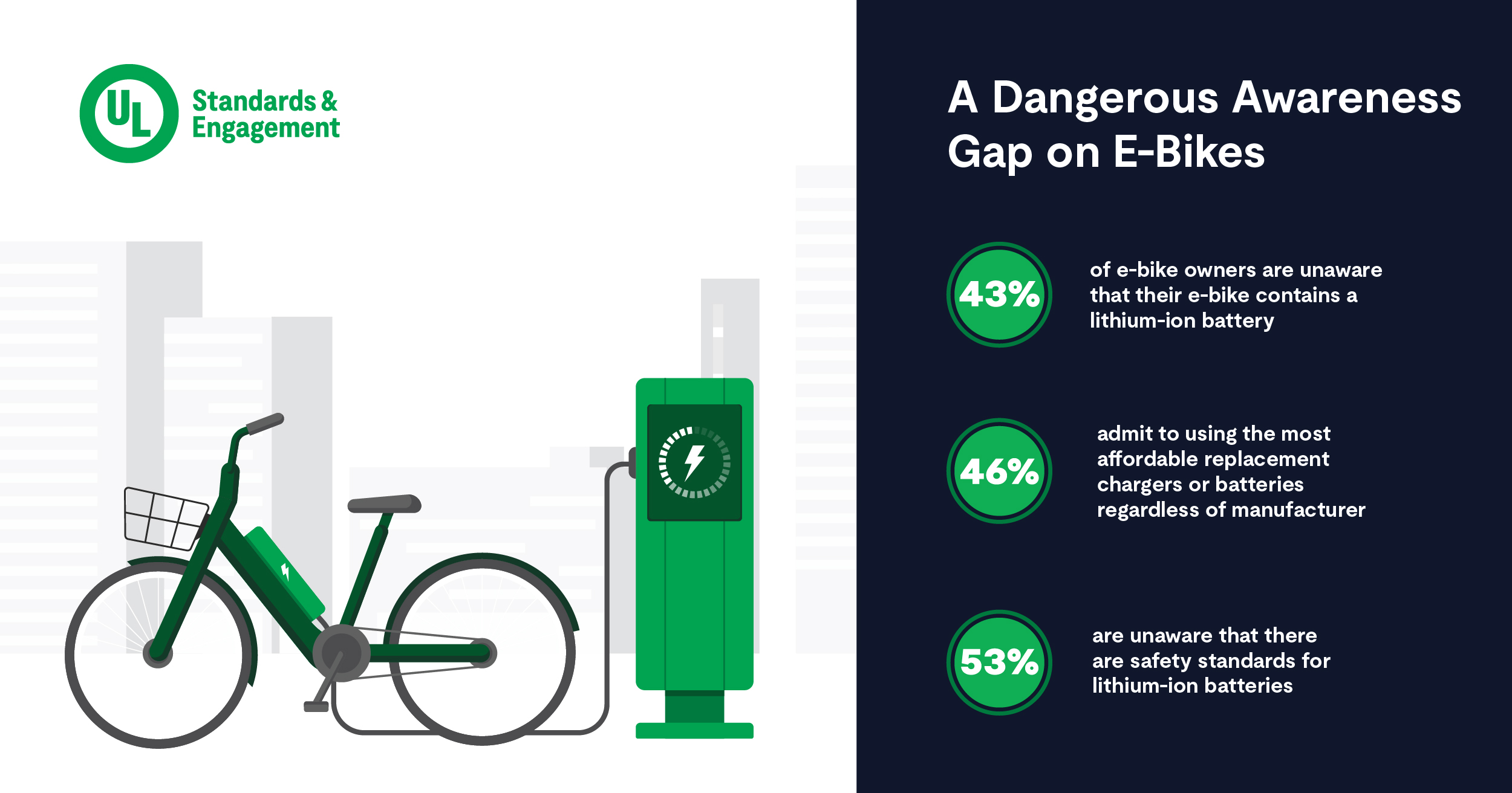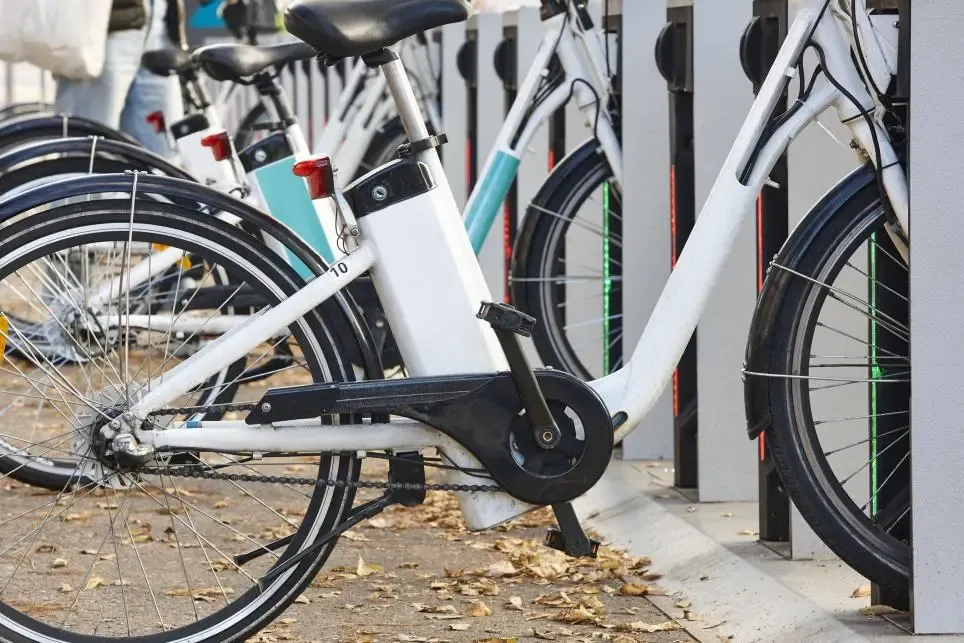Lithium-ion batteries are commonly used in e-mobility devices, among other rechargeable electronics, to leverage their high power-to-size ratio. However, recent coverage has highlighted the potential hazards that exist for users of these devices.
The Risks
- Damaged or malfunctioning lithium-ion batteries may slip into thermal runaway, an uncontrollable, self-heating state that can end in fire.
- Fires caused by lithium-ion batteries are faster and more aggressive than other fires.
- Safer batteries are more expensive, and alternatives that are counterfeit or cut corners on safety are flooding the market.
- There is a lack of awareness among consumers about just how dangerous their devices can be.

How can standards reduce the risk?
Our e-mobility standards cover batteries, chargers, electrical systems, and more, with specific requirements tailored to each device. These include various construction and performance requirements that address environmental, mechanical, and electrical hazards, as well as marking and instruction requirements that inform users about proper care and maintenance practices. Testing requirements in our standards simulate conditions that a device may encounter during normal use, such as high ambient temperatures, water exposure, and vibration testing. Certain tests even take abnormal use and foreseeable misuse into account, such as mechanical shock from a drop or fall, or overcharging due to a fault in the charging control circuitry. The temperature of each device’s electrical system is monitored during these tests, and the device will not pass if it exceeds certain limits, or if there is any indication of fire, explosion, rupture, electrolyte leakage, or electric shock hazard. Learn more.
How you can get involved
UL Standards & Engagement is currently developing a new binational U.S./Canada standard, UL 4900, the Standard for Safety for Micromobility Charging Equipment, which will cover charging equipment intended for use with micromobility systems, subassemblies, and/or components covered by UL 2849, Electrical Systems for eBikes; UL 2272, Electrical Systems for Personal E-Mobility Devices; or UL 2271, Batteries for Use In Light Electric Vehicle (LEV) Applications. TC members are needed from areas including supply chain, trade associations, commercial/industrial users, regulators, and government. Click here to submit an application to TC 4900, or contact the Project Manager of this committee, Megan Monsen at Megan.Monsen@ul.org.
Related Resources
- Addressing Battery Fire Risks Through Standards
- Addressing Lithium-Ion Battery Risks
- Case Study: How Cities are Reducing E-Bike Fires with Standards
- Standards Matter: Addressing the Risk of Electrical Shock and Fire From eBikes
- Standards Matter: Addressing the Risk of Electrical Shock and Fire from E-Mobility Devices
- Examining the Fire Safety Hazards of Lithium-ion Battery Powered e-Mobility Devices in Homes (Fire Safety Research Institute)
- Fire and Thermal Runaway Propagation Challenges in Electric Vehicles: What We Recommend (UL Research Institutes)
- Take Charge of Battery Safety (UL Research Institutes)
- eBike and eScooter Safety tip sheet (NFPA.org)
Fast Facts
As of October 2023, there have been 1,560 incidents, 621 injuries, and 111 fatalities involving lithium-ion batteries. (Source: UL Solutions)
Our January 2024 poll found that only 28% of respondents check to see if the rechargeable products they purchase meets lithium-ion battery standards. (Source: UL Standards & Engagement)
According to the same poll, 51% of e-bike owners are unaware their e-bike contains a lithium-ion battery. 57% of EV owners are unaware their vehicle is powered by a lithium-ion battery.(Source: UL Standards & Engagement)






